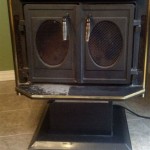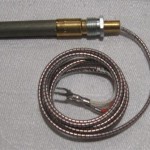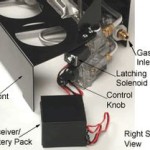What Is a Direct Vent Fireplace?
Direct vent fireplaces are a popular choice for homeowners seeking the warmth and ambiance of a traditional fireplace without the drawbacks of an open hearth. Unlike traditional fireplaces, which rely on a chimney for venting, direct vent fireplaces utilize a sealed system that exhausts combustion gases directly to the outdoors. This efficient system offers several benefits, including improved energy efficiency, reduced heat loss, and increased safety.
How Direct Vent Fireplaces Work
Direct vent fireplaces operate on a simple principle. Air for combustion is drawn into the fireplace through a sealed intake pipe, while combustion gases are simultaneously exhausted through a separate sealed exhaust pipe. Both pipes pass through an exterior wall, typically through a specially designed vent kit. The sealed system prevents the loss of heated air inside the home, resulting in a more efficient and cost-effective heating source.
Benefits of Direct Vent Fireplaces
Direct vent fireplaces offer numerous advantages over traditional open hearth fireplaces:
Improved Energy Efficiency
The sealed system of a direct vent fireplace drastically reduces heat loss. Unlike traditional fireplaces, which can lose significant amounts of heat through the chimney, direct vent fireplaces efficiently transfer heat directly into the room. This improved energy efficiency can result in lower heating costs and a more comfortable indoor environment.
Reduced Air Pollution
Direct vent fireplaces are designed to minimize air pollution. The sealed venting system ensures that combustion gases are safely exhausted outdoors rather than being released into the home. This reduces the risk of carbon monoxide buildup, a potentially deadly gas.
Enhanced Safety
Direct vent fireplaces offer increased safety compared to open hearth fireplaces. The sealed system eliminates the risk of sparks or embers escaping the fireplace, reducing the chance of fire hazards. Additionally, direct vent fireplaces often feature safety features such as automatic shut-off valves and overheat protection systems.
Versatility and Design Options
Direct vent fireplaces are available in a variety of styles, sizes, and finishes, allowing homeowners to choose a unit that seamlessly complements their existing décor. From traditional to modern designs, there are options to suit a wide range of tastes and preferences.
Types of Direct Vent Fireplaces
Direct vent fireplaces come in various types, each with its own unique characteristics:
Gas Fireplaces
Gas fireplaces are a popular choice for their convenience and ease of use. They typically operate on natural gas or propane and feature a simple ignition system. Gas fireplaces offer efficient heat output and realistic flame patterns.
Wood-Burning Fireplaces
While less common for new installations, wood-burning direct vent fireplaces offer the traditional charm of burning wood. These fireplaces require regular maintenance and a source of firewood but provide a unique ambiance and a natural heat source.
Electric FireplacesElectric direct vent fireplaces offer a convenient, energy-efficient option for homeowners seeking the look and feel of a traditional fireplace without the need for a venting system. They feature realistic flame simulation and often have adjustable heat settings.
Considerations for Direct Vent Fireplace Installation
When considering a direct vent fireplace installation, homeowners should consult with a qualified HVAC professional. The installation process involves careful planning and requires adherence to local building codes and safety regulations. Factors to consider include:
Location
Selecting the appropriate location for the fireplace is crucial. The fireplace must be placed near a suitable exterior wall where the vent pipes can be routed. Consider the desired placement and the existing wall structure during the planning phase.
Venting System
The venting system for a direct vent fireplace is essential for safe and efficient operation. The vent pipes must be properly sized and installed according to manufacturer specifications and local codes. A qualified HVAC professional can ensure the correct installation and provide guidance on choosing the appropriate vent kit.
Building Codes
Direct vent fireplace installation must comply with local building codes and fire safety regulations. The HVAC professional will ensure the installation meets these standards.
Maintenance
Direct vent fireplaces require regular maintenance to ensure proper functionality and safety. This includes cleaning the vent pipes, inspecting for blockages, and checking the combustion system. Following manufacturer recommendations for maintenance is essential.
Understanding How Direct Vent Works Heat Glo

What Is A Direct Vent Fireplace Fireplaces Learning Center
.aspx?strip=all)
Benefits Of Direct Vent Fireplaces Regency Fireplace S

Vented Vs B Vent Direct Free Dixie S
.aspx?strip=all)
Benefits Of Direct Vent Fireplaces Regency Fireplace S

What Is A Direct Vent Fireplace Fireplaces Learning Center
.aspx?strip=all)
Benefits Of Direct Vent Fireplaces Regency Fireplace S
Gas Fireplace Venting Explained Heat Glo

What Is A Direct Vent Fireplace Fireplaces Learning Center

What Is A Direct Vent Fireplace
Related Posts








